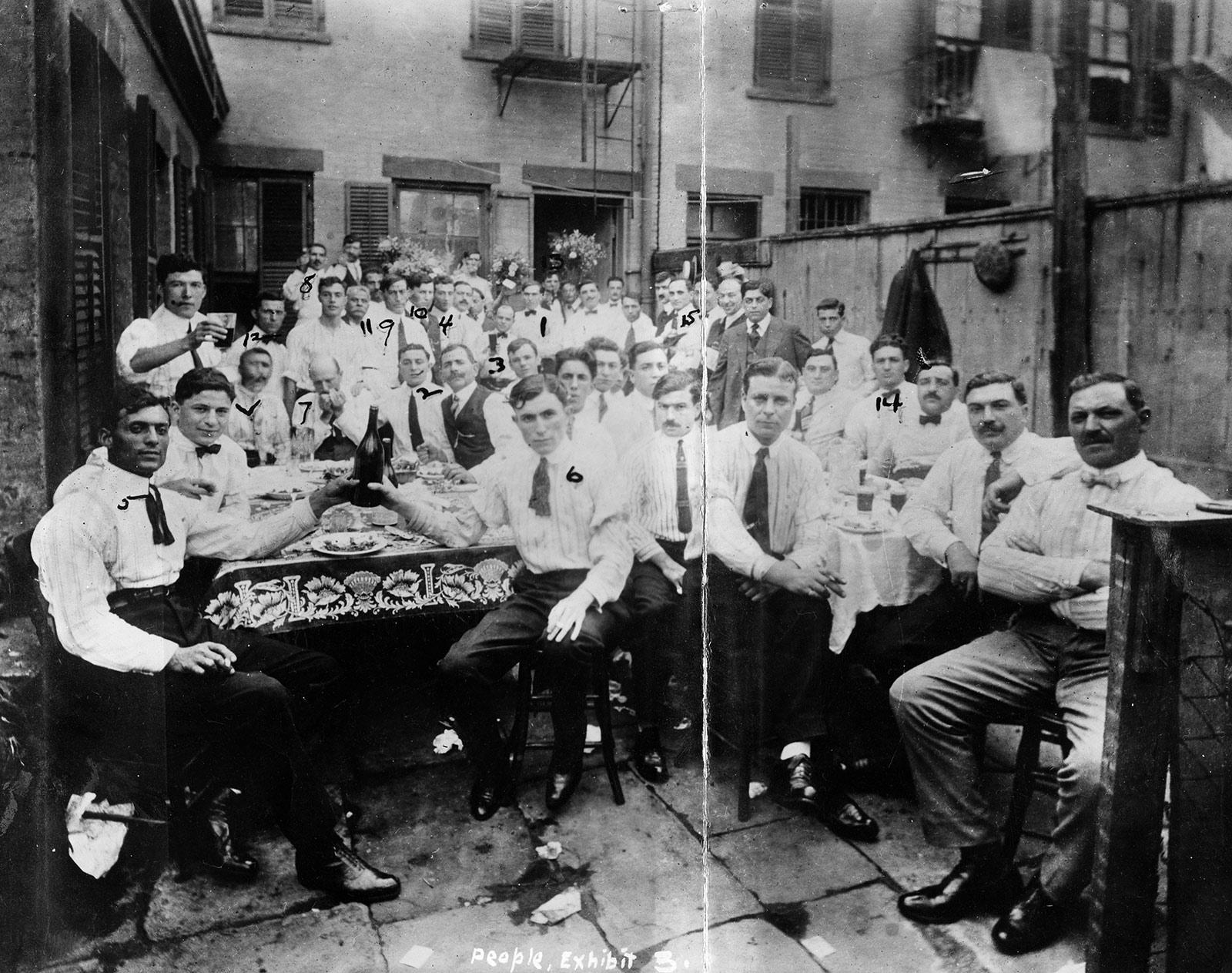4.5 Subculture Theories
The dominant culture is the majority group that has its certain norms, values, and preferences that are imposed on everyone else. This culture is forced on everyone as the accepted way to live, behave, and believe whether or not groups who are not represented in this dominant majority agree and even when they contradict what is preferred for smaller, less powerful groups. These other groups have their own subculture, which may not align with the dominant culture.
A subculture is an identifiable subgroup within the larger culture whose values may differ from those present in the dominant group. This could include specific standards of behavior that are learned and passed down from generation to generation, for example. Crime, gangs, violence, and inner-city neighborhoods have been studied in a manner that ties the concept of subculture to criminal and even violent behavior.
4.5.1 Gangs

Figure 4.6 Photograph of the Navy Street gang in Brooklyn, New York used as a prosecution exhibit at trial in 1918.
Frederic Thrasher, another sociologist from the famed Chicago School, conducted a classic study in 1927 in which he described gangs as coming together spontaneously at first, then becoming integrated through conflict with other gangs and the surrounding community. The gangs had similar features to formal organizations, such as an identity as a group, stability, commitment, exclusivity, and an internal structure with distinct statuses and roles (figure 4.6).
Thrasher’s study included 1,313 gangs that each occupied a part of Chicago. He believed that the social conditions in the United States at the end of the nineteenth century encouraged the development of street gangs. An influx of immigrants filled the inner-city neighborhoods and they created a more culturally diverse population that was subjected to deteriorating housing, poor employment prospects, and a rapid turnover in the population. The conditions created socially disorganized neighborhoods (remember social disorganization theory) with weak and ineffective social institutions and social control mechanisms. It was this lack of social control that Thrasher believed encouraged youth to discover alternative ways to establish social order which was accomplished by forming gangs.
4.5.2 Violence
American criminologist Marvin Wolfgang and Italian criminologist Franco Ferracuti (1982) developed the subculture of violence theory in which they used norms and values as explanatory variables for the origin of violent crime. They implied that norms of behavior are created in social conditions, social classes, and ethnic and racial groups. Wolfgang (1958) conducted a study on homicide in Philadelphia and discovered evidence consistent with his and Ferracuti’s theory. Forty-three percent of the homicide offenders had been arrested previously for crimes against persons with about one-fourth of homicide victims having been previously arrested for violent crimes. The conclusion is that there are certain groups in certain areas where there exists a norm that favors the use of violence to deal with conflict and it is seen as normal in these communities.
For some, violence is more common during their youth, but as they become older, they distance themselves from the violence that once may have been common. Reacting to situations with violence is a learned behavior that can be unlearned.
4.5.3 Code of the Streets
In 1990, Elijah Anderson published his findings of a study that looked at Black neighborhoods along Philadelphia’s Germantown Avenue in his book The Code of the Street. In his study, Anderson detailed the aspects of the code of the street, or street culture, that stressed a hyperinflated notion of manhood that centers on the idea of respect. According to Anderson, respect was defined as being treated right or being granted one’s props or the deference an individual deserves. Learn directly from Anderson about his book here.
In the code, a man’s sense of worth is determined by the respect he can command in public. How is this respect gained? Anderson found that since they lived in a subculture that was violent, an individual could not back down from any threat no matter how serious. Also, since economic and social circumstances limited opportunities for legitimate success, many tried to find alternative ways of making money to provide for their families.
One major distinction that Anderson made was between both families and people in the inner-city neighborhoods by dividing them into two different groups: decent families and street families. “Decent families” upheld positive values. Conversely, “street families” were oriented to the values of the streets which involved displays of physical strength and intellectual prowess that demonstrated their ability to take care of themselves and their families.
The code was helpful to achieve success on the streets but was very detrimental when it came to socially accepted (and legal) success. Violence in society does not generally increase opportunities, rather it actually limits opportunities. This makes for a difficult transition for individuals who wish to leave “the life” but do not have the skills to achieve success in a society where one doesn’t benefit from being street-smart.
4.5.4 Licenses and Attributions for Subculture Theories
“Subculture Theories” by Curt Sobolewski is licensed under CC BY 4.0.
Figure 4.6 Photo by unknown photographer is in the Public domain, via Wikimedia Commons.
